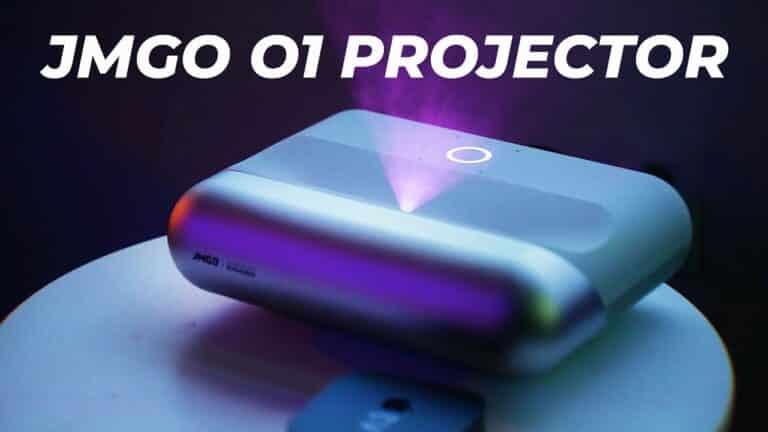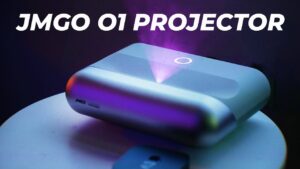The JM1 is a small ultra-short-throw projector with a deceptive design. It’s as compact as they get while delivering an image that rivals some of the greatest projectors. Perhaps even more amazing is the JMGO O1 Pro’s price: at $1,599 (AU$2,299, or roughly £1,225), it’s less than half the cost of several comparable UST projectors on the market.
However, the JM1’s reduced price comes with some significant trade-offs when compared to its competitors. It only has a 1080p resolution, and while its LED light source is efficient & long-lasting, it isn’t as bright as other laser-powered versions, and it struggles to be as colorful.
In the appropriate circumstances, JMGO O1 Pro is a capable small home theatre bundle. It doesn’t require much space or preparation to hang a large, 100-inch painting on the wall. It’s also bright even in a dark environment without having to be black, though that would help. However, watching throughout the day is a bad idea. The projector comes with a respectable set of 10W speakers that could fill a small-to-medium-sized room well but don’t have a lot of stereo separation.
This JM1 has a smart TV platform built, but it isn’t really helpful or dependable, and the otherwise fancy-looking remote control isn’t either. Setting up the JM1 with an outside streaming stick is a fantastic option, as it leaves just one more HDMI port for a gaming console or even other input.
What you will see here?
JMGO O1 Pro: Price
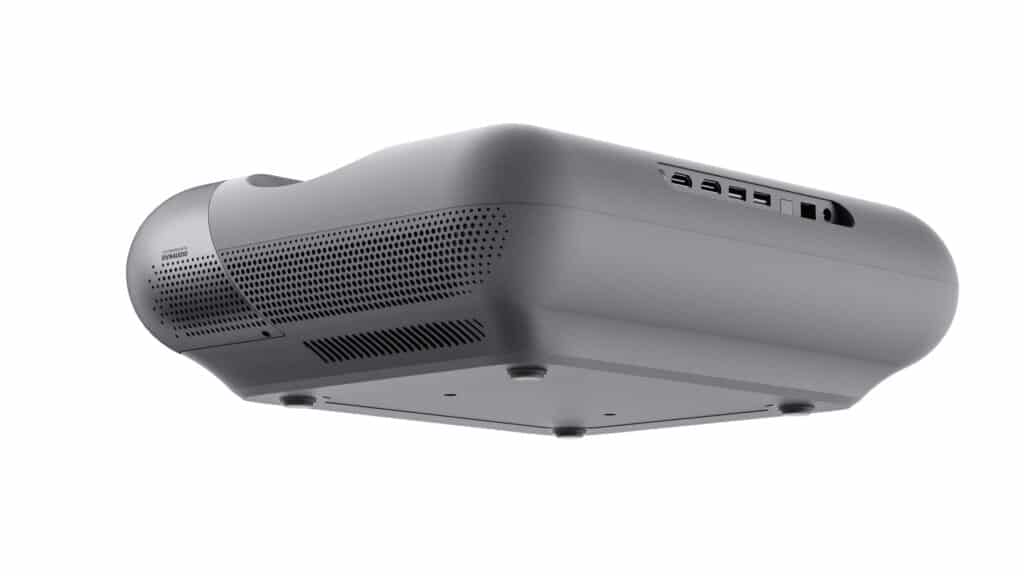
The JMGO O1 Pro may be the smallest UST projector, however, the basic JMGO O1 is just $900 and offers a reduction in brightness. There are, however, a lot better solutions available for those who can spend even more and deal with the slight inconvenience of a basic projector setup.
Design and Features
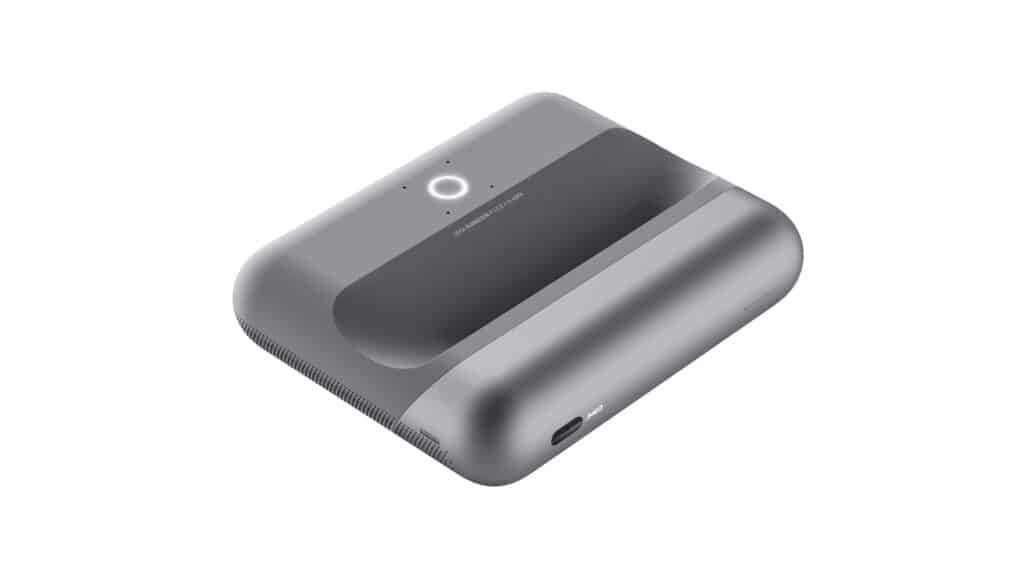
From the start, the JO1 stands apart from other ultra-short-throw projectors. This is a little item. While most UST projectors are willing to occupy a few square feet of an entertainment center, the JO1 is half the length of most of its rivals and resembles a little silver blimp.
The JO1’s LED-powered projection system, a collection of 10-watt speakers, a smart TV platform, and the detector it needs for fully automated focus, keystone, brightness, and color adjustments, as well as a front-facing camera that can be used for gesture recognition (or easily taped over for anyone who doesn’t like a camera staring at all of them and the time in their living room), are all packed inside that small frame.
The Luna OS smart TV platform, which is proprietary, leaves a lot to be desired. While it offers the ability to change settings and switch HDMI inputs, as well as a PiP of HDMI input before committing to it, it’s better left alone. Within an app, buttons just on the remote frequently do nothing, as well as the app store seems questionable. You arrive at a Get Started page after installing Netflix & running the program, which does not enable any input. You have even more worries about JGMO’s ability to gain adequate app support since Xgimi hasn’t been able to secure Netflix compatibility on any of the Android TV-powered projectors.
JMGO O1 Pro created an interesting projector remote control with a stylish metal look & USB-C charging, but it’s a bit of a nuisance to use. It doesn’t like quick inputs, such as changing the level, and it virtually never functions from more than ten feet away, which would be essentially where a user would sit when using a projector with a 110-inch screen.
JMGO O1 Pro with External Source
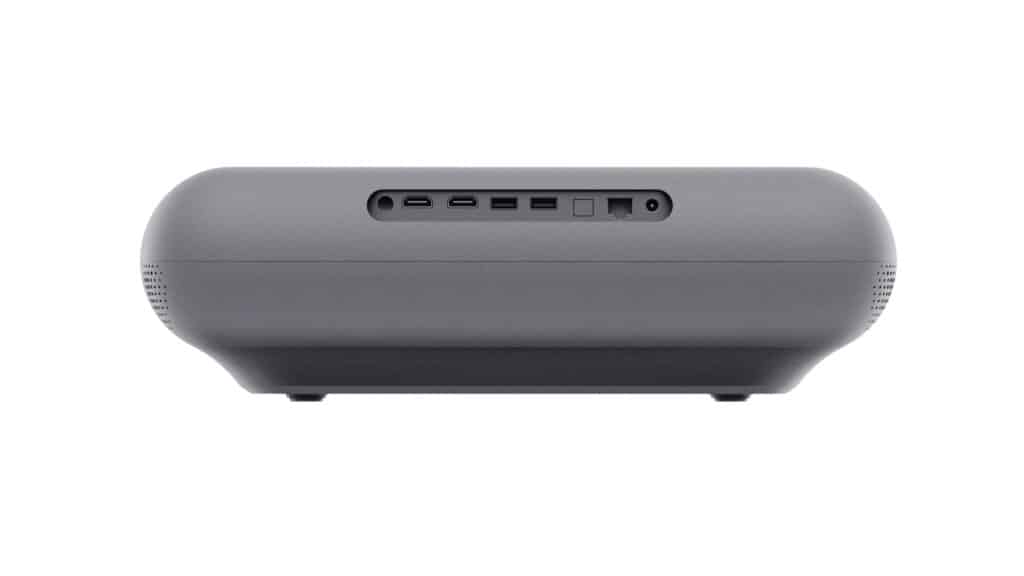
To use an external source for the projector is unquestionably preferable. However, the fact that there are just two HDMI connections is a bit of a stumbling block. The 2 USBÂ ports on the rear will assist power them up if they’re filled with a set of streaming sticks. Local material can also play over the USB ports. Both an optical & 3.5mm audio output complete the connectors. Support the CEC by those HDMI connections, which is useful, however, it regularly boots up our PS5 accidentally. Disabling CEC didn’t seem to cause any issues at first, but after a day, no sound came from any HDMI inputs no matter how so many settings you tried until we factory reset the device.
The projector’s speakers somewhat compensate for its flaws. Since they’re loud enough for a 100 to 200-square-foot room without warping too much as the level rises. However, because the speakers’ bass isn’t particularly strong, an additional audio device might help boost the oomph factor.
Picture Quality
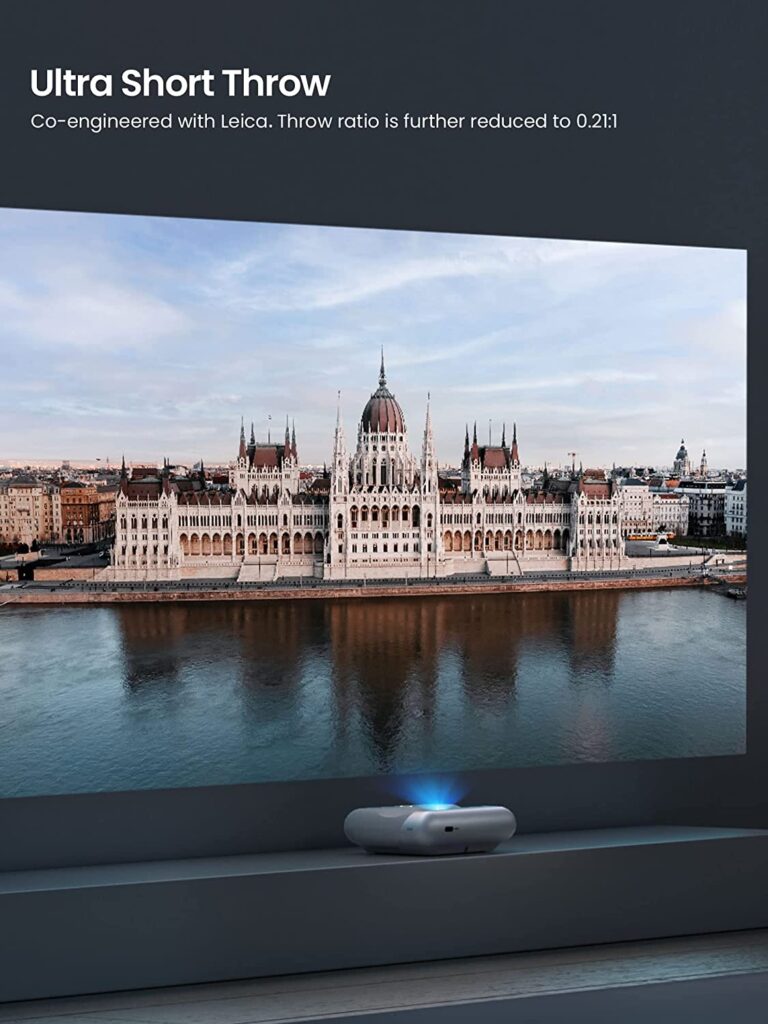
A UST projector promises a huge picture that’s simple to achieve — no fiddling with where the projector should place in the room to have the image up on walls in the proper size. It’s simple to square up, but a few inches back or front will simply expand the image to fit.
The JMGO O1 Pro is a perfect example of this. It’s simple to receive an 80-inch or a 110-inch photo, whichever size you like. If the picture isn’t quite squared away, the projector may automatically keystone it. It will also automatically focus, and if you want a smaller image. But didn’t leave the projector nearer to the wall. It’s possible that the image would be digitally reduced.
You’d expect an amazing image for the JM1’s price tag but delivers is not regularly. The projector has a peak brightness of 1,500 ANSI Lumens (or 1,250, depending on how the maker markets it). That may sound brash, but it’s not going to hold up during the day. To obtain a decent image in your living room during the day. You have to close all the blinds, turn off all the lights, and have cloudy weather. In those settings, it’s OK for cartoons and cheerful stuff, but anything darker is nearly hard to view.
Video Settings
It takes a lot more effort to get a decent photo from the JMGO O1 Pro than it does to get a huge picture. The settings disperse throughout the film. To get a usable image, change the Brightness in Projection Settings to “High Brightness,” then go to Video Settings as well as set Image Mode to “Bright Colored,” and finally turn off HDR. Turning off HDR makes for just a brighter picture. But stinks all the life out of the color while turning it on makes for a more compelling image. But ends up costing a bit of lighting and sinks shadows into the dark depths where it’s hard to make anything out.
It’s so easy to make a mistake and end up with a bad image. With a few incorrect toggles, the image becomes flat, with half of just about everything washed out or the remainder too dark, to not mention the motion smoothing, which is terrible if kept on. So it’s awful at worst and OK at best. It’s worth noting this is $1,599 for only a 1080p/60 image.
To get the most out of the image, you’ll need precise control over the setting. Ideally, a space that can go entirely black. For a projector designed for simplicity, that’s a tall order. Meanwhile, a half-dozen less expensive projectors get brighter, bigger, and better picture quality. With enhancements like 4K resolution and faster refresh rates. Few are ultra-short-throw, but for those who can live with a longer throw, it will almost certainly be worth it.
Conclusion
UST projectors are small enough to fit into a small home theatre system. But the JMGO O1 Pro projector is even smaller than its competitors. It’ll take up about the same amount of room as a set of boots in their box. To achieve a large image, what you need is a few inches of gap between your wall as well as the JM1. It’s simple to choose a large, square image for a cozy home theatre. The LED light source of the JM1 is low-power and long-lasting, with a 45,000-hour lifetime. So if you leave it on by accident now and again, it won’t significantly reduce the life of your projector.
Despite its low cost as an ultra-throw-throw projector. The JM1 isn’t particularly inexpensive in the larger scheme of things, nor is it particularly high-performing for the price. The Xgimi Aura is pricier. But it’s a brighter, lasers UST projector with only a 4K image and a smart OS that’s truly helpful. The JM1 is then simply ruined by longer-throw projectors. The Xgimi Horizon Pro 4K is brighter at 2,200 lumens & produces a 4K picture for around the same price as the JM1. Both the $1399 Optoma UHD38 and the $1599 Anker Nebula Cosmos Max 4K projectors provide a brilliant 4K image. While Anker’s recently announced Nebula Cosmos Laser projector available in a 1080p version for $1599 with a significant brightness boost.
Read more:
- The Best 4K Projectors in 2025!
- Kodak Luma 400 – Light And Compact Projector, But Does It Justify Its Price?
- How to back up iCloud Photo Library – The cloud-based sync service
- How to change the Wallpaper on iPhone and iPad
- Amazon Fire HD 10 Kids review- Tablet for your children!


